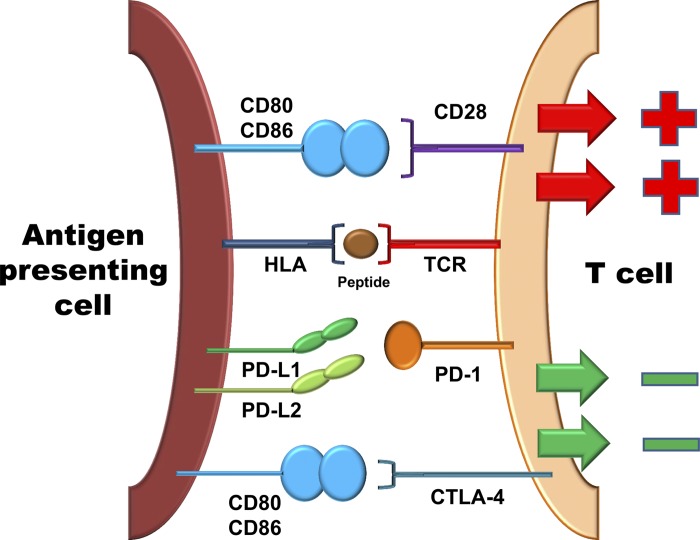Fig. 2.
Costimulatory and coinhibitory signals in T cell regulation. T cells interact with antigen-presenting cells to recognize their cognate antigen. The T cell receptor (TCR) binds to the human leukocyte antigen (HLA)-antigen complex to trigger the T cell activation cascade. Concomitant receptor-ligand interactions provide either positive signals (costimulation) or transmit negative signals (coinhibition), ultimately to adjust the quality, intensity, and duration of the T cell response. Shown is the major costimulatory molecule CD28, which binds to CD80 and CD86 to amplify the T cell activation cascade. Also shown are the two major inhibitory pathways. The inhibitory receptors cytotoxic T lymphocyte-associated antigen-4 (CTLA-4) and programmed cell death protein-1 (PD-1), expressed on T cells, are triggered by their ligands on the antigen-presenting cell and provide a “stop” signal to the T cell.

